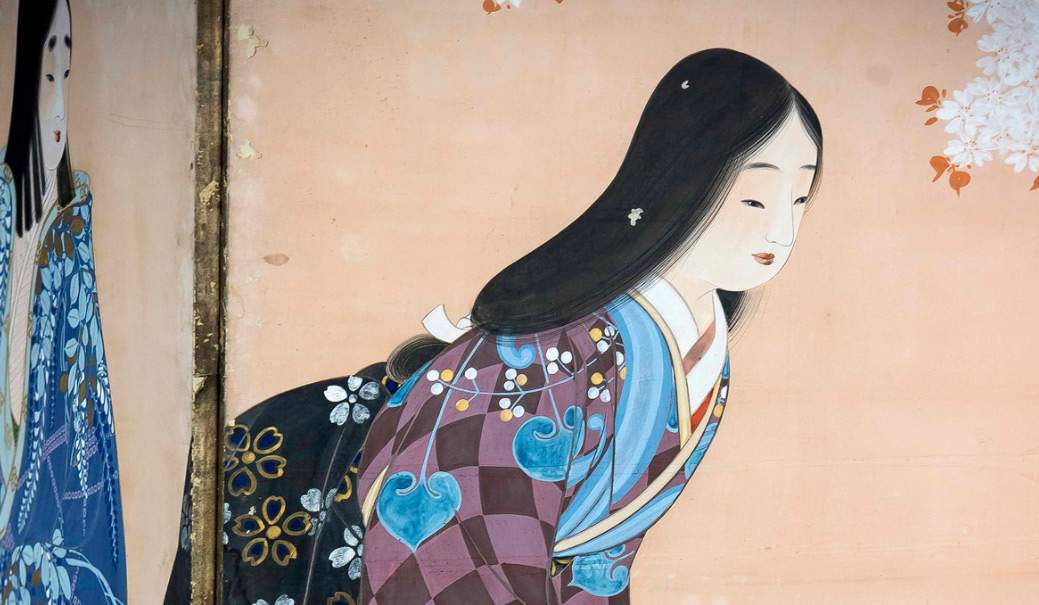From April 4 to June 30, 2019, the Casa dei Carraresi in Treviso is hosting the exhibition Japan. Land of Geisha and Samurai, curated by Francesco Morena, which offers a cross-section of the traditional arts of the Far Eastern archipelago through a precise selection of works datable between the 14th and 20th centuries, all from the private collection of Valter Guarnieri, a passionate collector from Treviso who has created over the past decades a collection of great quality and very large in terms of materials, techniques of realization and iconographic subjects. The exhibition is produced by ARTIKA with the collaboration of Fondazione Cassamarca and the patronage of the City of Treviso.
The itinerary is developed by thematic islands, on the one hand delving into the many aspects related to the customs and traditional activities of the Japanese people, and on the other creating focuses on the peculiarities and history of the collection. The opening of the exhibition could only be dedicated to the combination of Geisha and Samurai. Indeed, traditional Japan is a country populated by beautiful women, the geisha, and daring warriors, the samurai. The military class dominated the Land of the Rising Sun for a very long time, from the twelfth to the mid-nineteenth century, imposing their political will and elaborating a very refined culture whose echoes can still be felt in many spheres today.
The geisha, or more generally female beauty as we understand it (oval face sprinkled with white powder, very elegant dresses and cadenced manners), has been an equally deep-rooted cultural topos for Japan, from the highly cultured court ladies of the Heian period (794-1185) to the courtesans who lived between the 17th and 19th centuries, so well immortalized by Kitagawa Utamaro (1753-1806), the painter who better than any other rendered the vibrancy of the pleasure quarters of Edo (present-day Tokyo).
From the world of men to the crowded world of gods, a synthesis of indigenous beliefs and influences from the Asian continent. Buddhism, in particular, of Indian origin, came to the archipelago via China and Korea. It deeply permeated Japanese thought, especially in its variant of Zen, which is evidenced in this section by a group of paintings in the vertical scroll format depicting Daruma, the mythical founder of this sect.
This approach to Japanese art and culture continues by introducing us to the everyday life of its people: from entertainment activities such as Kabuki theater, the use of the kimono to Japanese artists’ predilection for micro-sculpture. Of the latter we find example in the core of accessories related to tobacco smoking. Also space is given to traditional stories and themes related to literature. The highlight of the major exhibition is reserved for the relationship between the Japanese and Nature, which in Shintoism, the archipelago’s indigenous philosophical and religious doctrine, is an expression of divinity. This privileged relationship with Nature is investigated here through a series of vertical scroll paintings, some of which were made between the nineteenth and twentieth centuries, at the dawn of modern Japan.
In the mid-nineteenth century, after more than two centuries of conscious isolation, the country decided to open up to the world. Thus, in the span of a few decades, Japan advanced with conviction toward modernity. Meanwhile, Europeans and Americans began to appreciate the superfine arts of that people, and many came to discover the mythical archipelago. The changed scenario led many artists to adopt foreign techniques and styles, and many artisans to produce works explicitly intended for foreign buyers. Among the art forms unheard of in Japan at that time, fine art photography undoubtedly occupies a place of choice. Foreigners visiting the archipelago very often purchased photographs to preserve and share a memory of that mysterious and beautiful country. This is the case of the stranger who acquired the nucleus displayed in the exhibition, who noted in Spanish, in the margins of the photographs, descriptions of the places and activities depicted in his shots. The last room is reserved for one of Japan’s most complex and at the same time most fascinating art forms, writing. Large screens adorned with powerful calligraphy conclude the exhilarating exhibition.
The exhibition opens Tuesday through Friday from 10 a.m. to 7 p.m., Saturdays, Sundays and holidays from 10 a.m. to 8 p.m. Tickets: full price € 12.00 reduced € 10.00 (groups minimum 10 people, Fai, Arci and Touring Club members, Trenitalia ticket holders with destination Treviso), special reduced € 8.00 (students aged 6 to 26), reduced family € 8.00 (minimum 2 adults and 1 minor). Free for journalists upon accreditation, tour guides with badges, accompanying teachers, non-self-sufficient disabled persons with accompanying person
Image: Female Beauties, 6-panel screen painted in ink and color on paper, 173x372 cm, Taisho period (1912-1926). Detail
 |
| Japan's Geisha and Samurai on display in Treviso |
Warning: the translation into English of the original Italian article was created using automatic tools. We undertake to review all articles, but we do not guarantee the total absence of inaccuracies in the translation due to the program. You can find the original by clicking on the ITA button. If you find any mistake,please contact us.